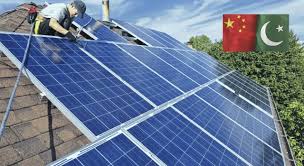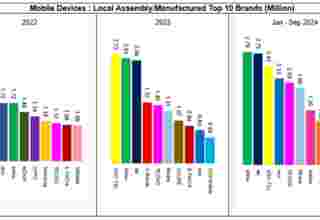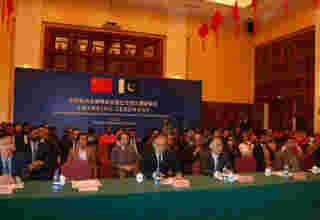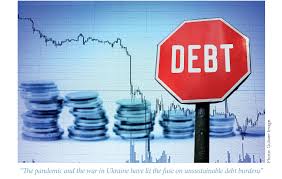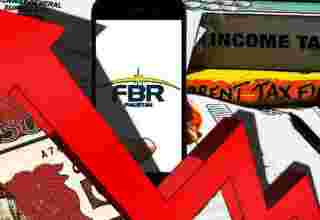ISLAMABAD, Dec 22 (INP): Rising inflation rate in the US is expected to trigger global repercussions, especially in developing economies, such as Pakistan, that are deeply linked to the US economy in terms of exports and the Greenback.
The Pakistani rupee is pegged to the U.S. dollar, hence its value has decreased, albeit a few other factors have also contributed to the rupee’s downfall, said Yasir Masood, an Islamabad-based Political Economist in an article carried by Gwadar Pro on Thursday.
He stated that in recent months, the rupee has fallen by over 36% against the dollar, with the dollar’s rise accounting for about 12% of the rupee’s depreciation.
Pakistan’s foreign reserves have been significantly drained in recent years due to a number of factors, including a drop in exports and remittances, rising imports of oil and food items, debt repayment, supply disruptions, and reduced reserves due to foreign exchange liquidity disparities.
Growing concerns about continuing the uncertain IMF rescue package, and political instability have further compounded the problem. This has led to a significant current account deficit, which the central bank has been unable to handle with the meagre foreign exchange inflows at its disposal.
In addition, investors have also pulled out funds from the market amid uncertainty over domestic economic policy. To make matters worse, due to sluggish global growth, Pakistan received less government development assistance this year than projected.
Pakistan is therefore unable to prevent diminishing foreign reserve holdings, and attract adequate assistance from foreign lenders. Even if these other factors are rectified, dollar strength, owing to U.S. interest rate hikes would continue to affect the value of the Pakistani currency.
Due to a steep reduction in oil prices, the rupee has recently risen to roughly 224 rupees to the dollar, from a high of 240 rupees to the dollar a few months ago. Theoretically, rate hikes by state-owned banks might increase yields on government bonds and bills, but economic volatility has deterred foreign investment amid these uncertainties.
Equivalent to U.S. dollars, Pakistan’s total external stayed at USD 127 billion over the past year due to improved relations between Pakistan, International Financial Institutions (IFIs) and Washington.
However, Pakistan’s overall external debt increased by Rs 6.8 trillion or 35% year on year to Rs 26.5 trillion at the end of September this year. In a single year, the external debt of the federal government, excluding IMF loans, rose to 18 trillion rupees. External debt surged by Rs 1,300 billion in net amounts.
This is mostly due to the rupee’s devaluation and the country’s efforts to borrow to build up its foreign exchange reserves.
The State Bank of Pakistan (SBP) reported that Pakistan’s IMF debt reached Rs 1.7 trillion by September, up 44% from a year earlier. This is despite the IMF spending USD 2 billion less than planned during this period. Total domestic debt held by the federal government rose to Rs. 31.4 trillion, up Rs. 5 trillion (19% annually) to reach this level.
The central bank also reported that an average currency rate at the end of September 2022 was 228 rupees to the U.S. dollar, down 57.4% in a year. This has had a significant impact on the government’s external debt. To put it differently, increases in the cost of servicing debt directly result from rising Debt Mountains.
In barely a quarter of the current financial year, debt service has topped 1 trillion rupees. According to the government’s updated estimates, the debt service could reach Rs 4.7 trillion.
Apart from this, Pakistan is currently experiencing a severe dollar shortage and cannot use dollars to handle inbound cargo. As international debts are paid, domestic dollar inflows have plummeted and foreign currency funding has dropped to its lowest level in four years.
According to SBP, Pakistan now has USD 6.7 billion in foreign exchange reserves and USD 12.6 billion in total assets. In addition, Pakistan has to pay more than USD 30 billion in overseas liabilities this fiscal year. Meanwhile, exports, remittances, and foreign direct investment are the three primary sources of dollars brought into the country, and all three have experienced negative growth over the past several months.
After successive governments exacerbated current account deficits through high imports compared to exports, the Central Bank of Pakistan has adopted aggressive measures like reducing commercial banks’ ability to finance high-end import products and cutting development spending on new projects to stemming capital outflows and making up for sluggish remittances amid rising currency rate volatility.
Principally, improving economic sector efficiency and productivity can help Pakistan’s foreign reserves recover. By pursuing higher economic competitiveness, Pakistan would be able to attract more international investment.
To that end, it should implement structural reforms in trade, investment, and labour laws that increase the ease of doing business and the regulatory environment for private sector development. Encouraging energy-saving technologies and diversifying energy sources could lower energy costs and promote economic sustainability over time.
To maintain excellent external performance, exports must be enhanced through increasing agricultural production and industrial expansion. Finally, investing in human capital through accessible education institutions and technical and vocational skills training programmes can boost local productivity and create employment in all sectors of the economy.
These must continue to be essential drivers of promoting economic growth and human development notwithstanding short-term volatility in U.S. inflation and interest rates. It is also true for Pakistan that only genuine economic sovereignty and sustainability can shield a currency from powerful external factors or prevent it from becoming a victim of the IFIS borrowing cycle.
Traditionally, Pakistan’s growth and development have been supported by capital inflows from countries with deeper pockets than its own. Favorably, the U.S. rate projection for 2023 indicates an inflation rate increase of up to 3%, which would form a significant increase over current rates and might lead to a rise in worldwide demand for a variety of goods, including those exported by Pakistan.
But the Pakistani rupee has declined 11.8 percent this year as a result of rising global inflation, rising borrowing costs, and a relocation of foreign investors from emerging markets to developed nations with higher yields. Increased U.S. interest rates in 2023 might put more strain on the nation’s already precarious balance of payments and reduce access to external financing, limiting economic growth until this fragile economy may adjust to a new normal of higher borrowing costs.





